Corruption
Corruption is a Shadow strategy of corrupting the Ring-bearer, usually by adding burdens until the Ring-bearer's resistance drops to 0. Several cultures can add burdens, but only a few are regularly used in corruption strategies: Ringwraith,
Raider (specifically Easterlings),
Moria (using Lost to the Goblins (1R189)
 ),
), Sauron and
Orc.
Ringwraith culture usually corrupts using cards like Úlairë Enquëa, Thrall of the One (10R68)
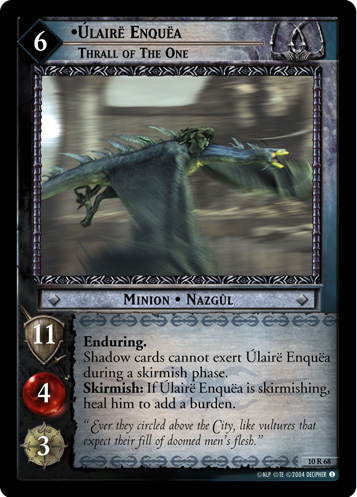 , It Wants to be Found (2U78)
, It Wants to be Found (2U78)
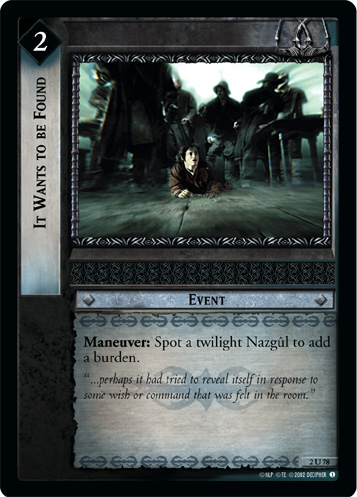 , and in Expanded Keening Wail (11R211)
, and in Expanded Keening Wail (11R211)
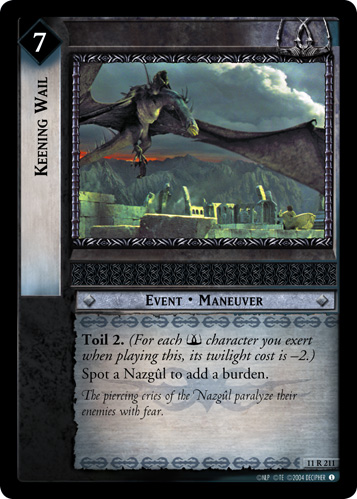 . They also may incorporate Gates of the Dead City (3R81)
. They also may incorporate Gates of the Dead City (3R81)
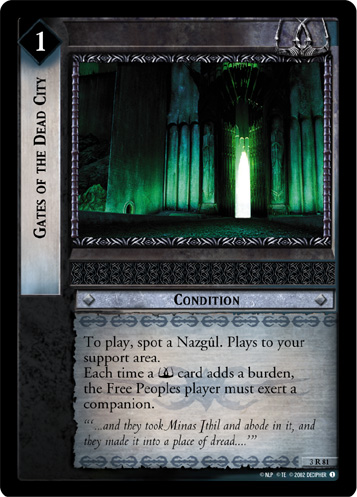 to exhaust your fellowship, potentially simply killing your Ring-bearer rather than corrupting him. Such a strategy can be even more lethal with Drawn to Its Power (1U211)
to exhaust your fellowship, potentially simply killing your Ring-bearer rather than corrupting him. Such a strategy can be even more lethal with Drawn to Its Power (1U211)
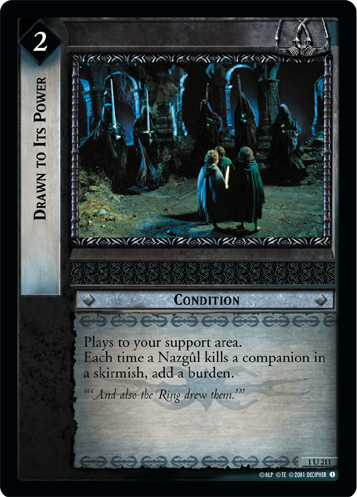 .
.
Easterling corruption often instead goes for a beatdown strategy with Small Hope (7R159)
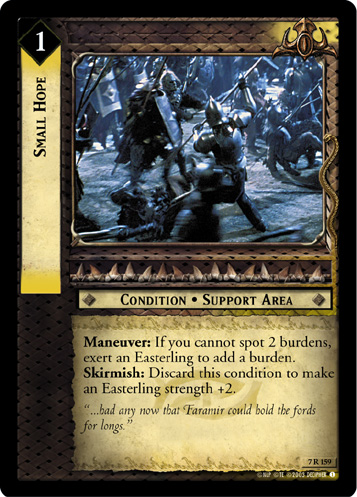 , Easterling Captain (4R225)
, Easterling Captain (4R225)
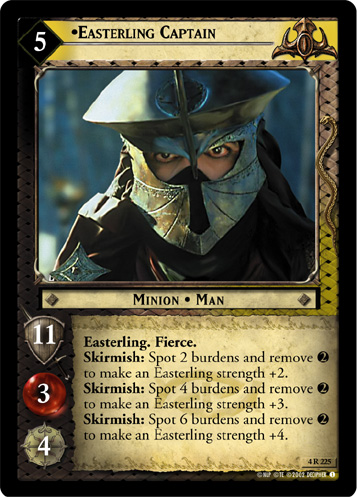 , Easterling Polearm (6U79)
, Easterling Polearm (6U79)
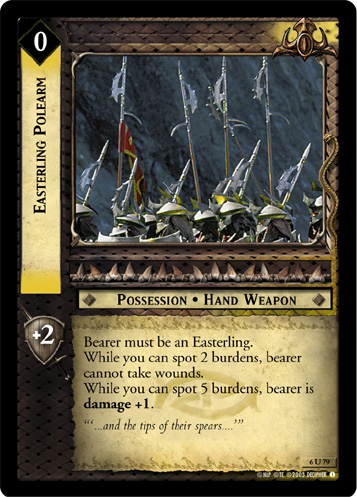 , and Raider Bow (7C155)
, and Raider Bow (7C155)
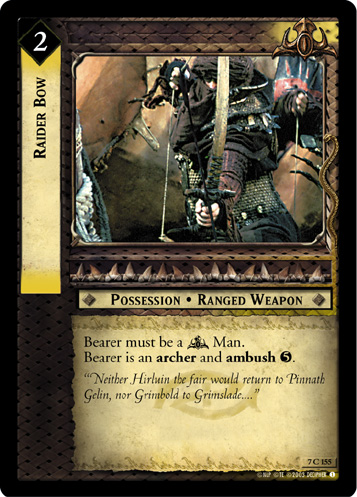 . However, with cards like Easterling Lieutenant (4C228)
. However, with cards like Easterling Lieutenant (4C228)
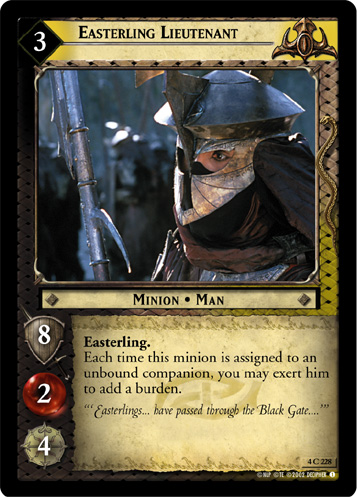 , Easterling Guard (4C226)
, Easterling Guard (4C226)
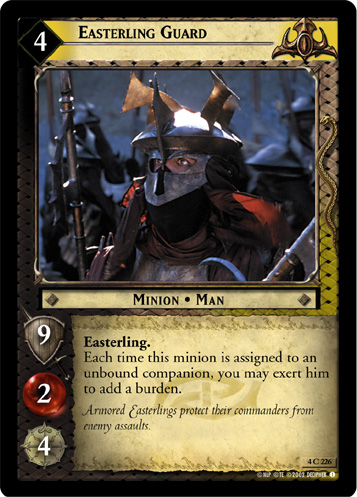 , and Vision From Afar (4R259)
, and Vision From Afar (4R259)
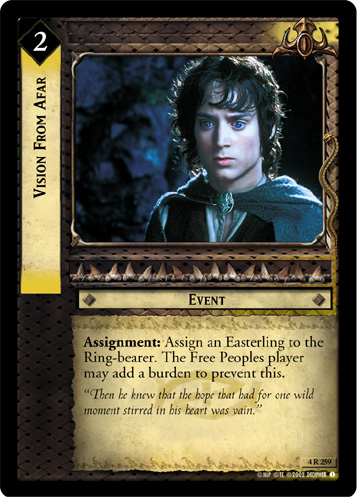 , corrupting the Ring-bearer is also possible.
, corrupting the Ring-bearer is also possible.
Moria corruption is the rarest of these, with only the occasional Lost to the Goblins (1R189)
 bomb deck. This archetype is rare, but piling up 12 burdens in one Shadow Phase can be quite an unpleasant shock for your opponent!
bomb deck. This archetype is rare, but piling up 12 burdens in one Shadow Phase can be quite an unpleasant shock for your opponent!
Sauron was the first viable corruption strategy, and remains one of the premier corruption cultures. Using cards like Desperate Defense of the Ring (1R244)
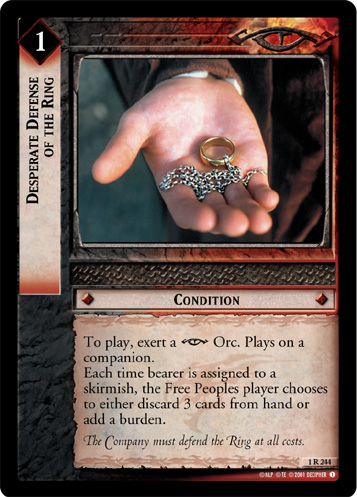 and Thin and Stretched (1R279)
and Thin and Stretched (1R279)
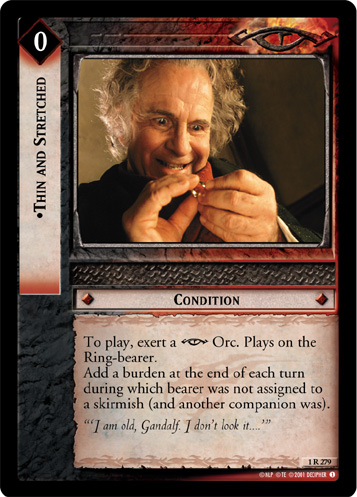 ,
, Sauron adds burdens slowly to wear down a Ring-bearer's resistance. A variant of the typical corruption would be playing Mordor Guard (7C287)
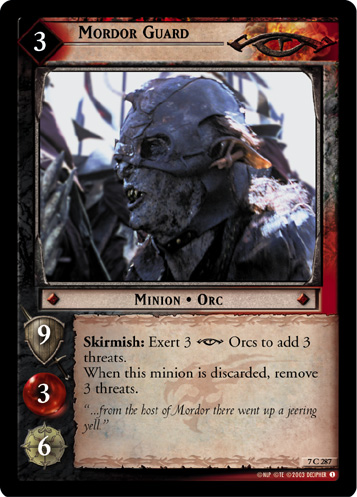 , Mordor Veteran (7U292)
, Mordor Veteran (7U292)
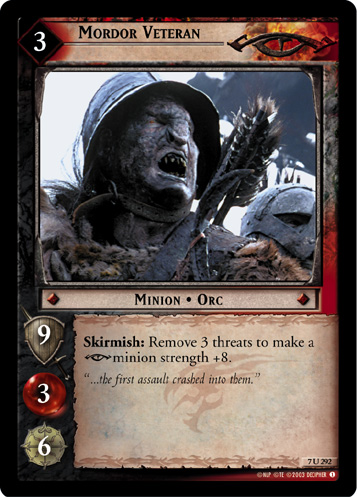 , and Orc Officer (7U302)
, and Orc Officer (7U302)
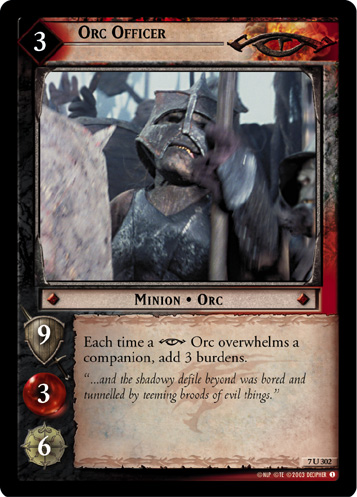 to add burdens rapidly by overwhelming a few companions.
to add burdens rapidly by overwhelming a few companions.
Orc corruption is potentially the strangest corruption strategy, recyling Isengard Underling (11C125)
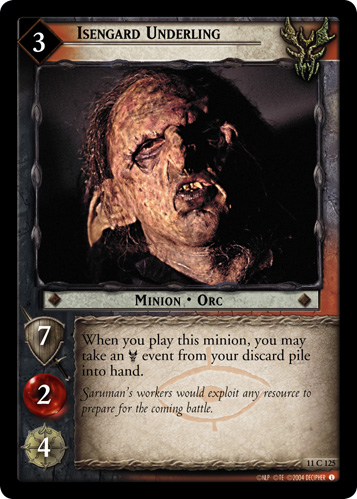 with Goblin Hordes (11R123)
with Goblin Hordes (11R123)
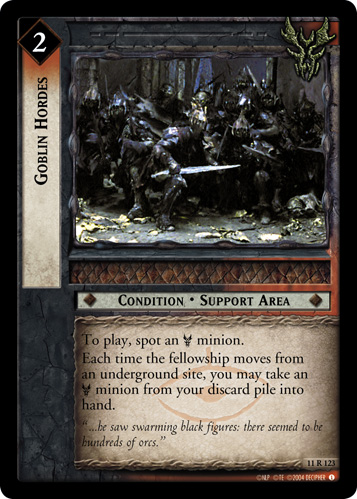 , which recurs Bound to its Fate (11U110)
, which recurs Bound to its Fate (11U110)
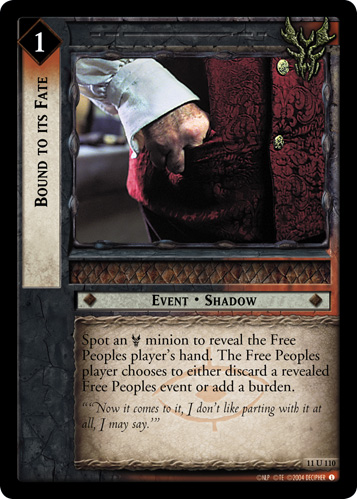 , and also playing Orc Miscreant (11C131)
, and also playing Orc Miscreant (11C131)
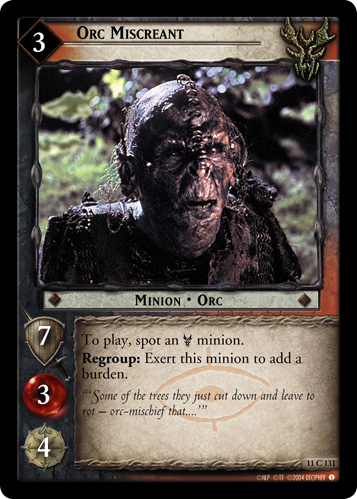 with Relentless Warg (17R89)
with Relentless Warg (17R89)
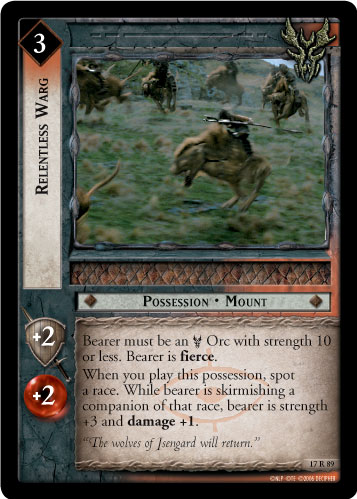 for extra burdening power.
for extra burdening power.
As strong as these strategies seem, there are cards that completely shut them down. The most notorious example, only valid in pre-Shadows formats, is Sam, Son of Hamfast (1C311)
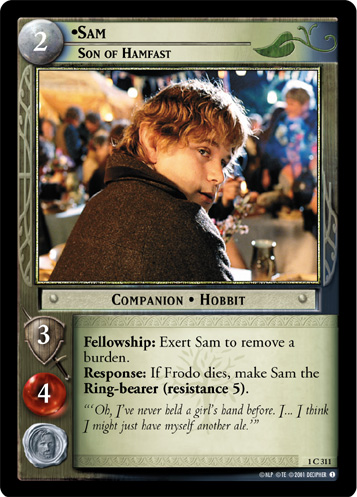 , with his ability to remove up to 3 burdens at once, then die to the largest minion. Another, less egregious, example would be Shadowfax, Greatest of the Mearas (17R24)
, with his ability to remove up to 3 burdens at once, then die to the largest minion. Another, less egregious, example would be Shadowfax, Greatest of the Mearas (17R24)
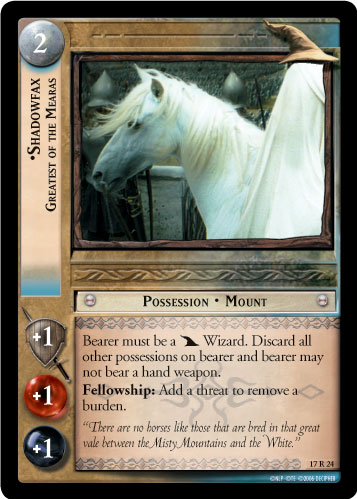 combo'ed with Citadel to Gate (7R33)
combo'ed with Citadel to Gate (7R33)
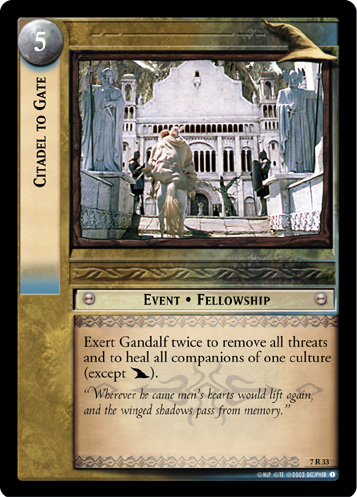 . This card is vulnerable to Úlairë Cantëa, Faster Than Winds (7R211)
. This card is vulnerable to Úlairë Cantëa, Faster Than Winds (7R211)
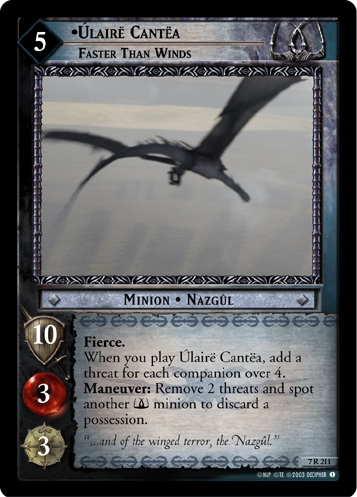 or Too Great and Terrible (3R85)
or Too Great and Terrible (3R85)
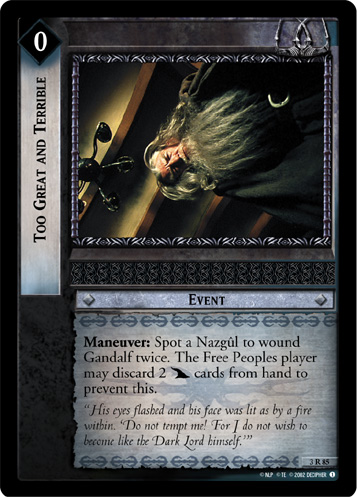 , making Nazgûl the most effective strategy against it.
, making Nazgûl the most effective strategy against it.